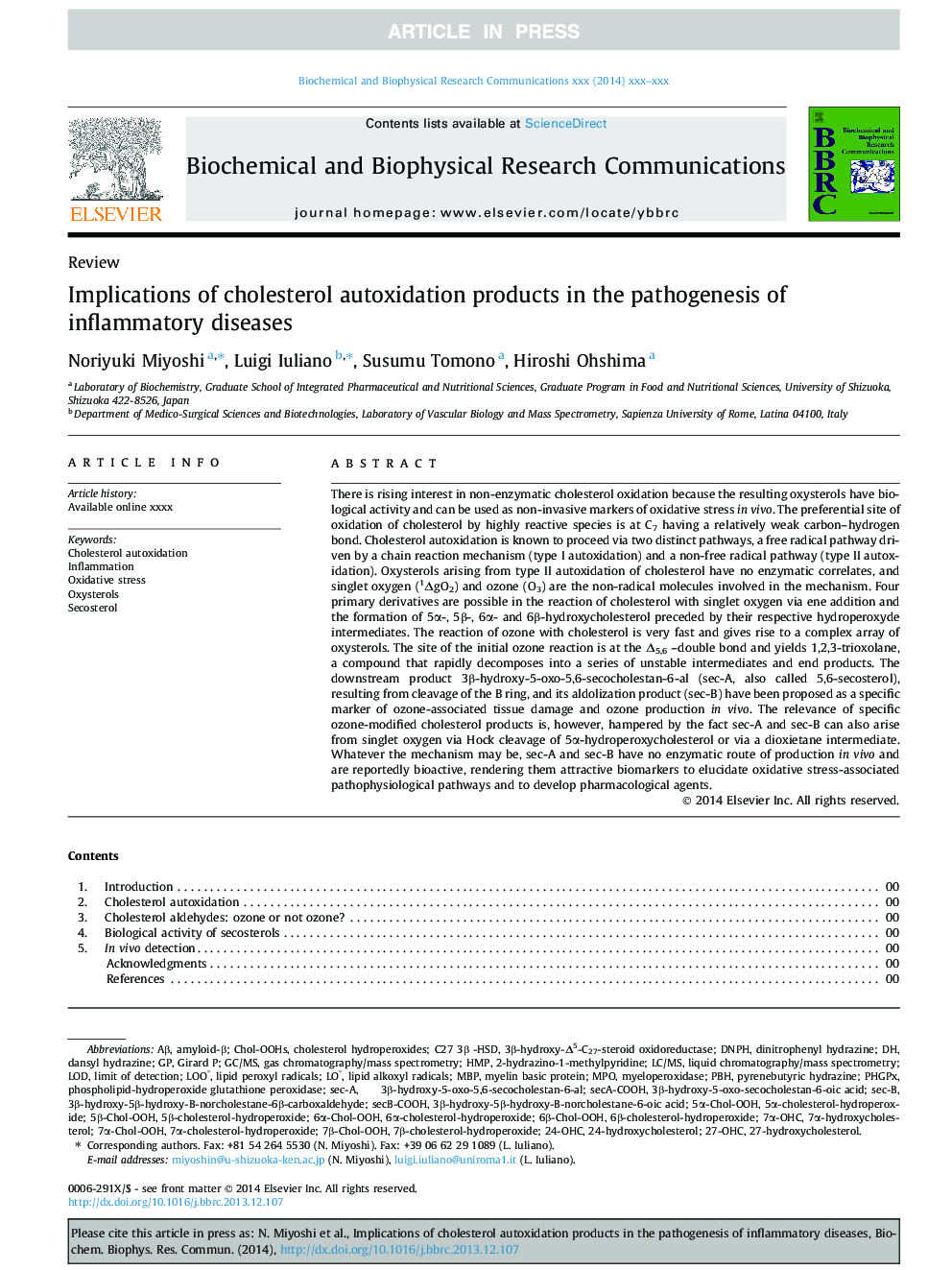| کد مقاله | کد نشریه | سال انتشار | مقاله انگلیسی | نسخه تمام متن |
|---|---|---|---|---|
| 10756519 | 1050384 | 2014 | 7 صفحه PDF | دانلود رایگان |
عنوان انگلیسی مقاله ISI
Implications of cholesterol autoxidation products in the pathogenesis of inflammatory diseases
ترجمه فارسی عنوان
اثرات محصولات اتوکسیداسیون کلسترول در پاتوژنز بیماری های التهابی
دانلود مقاله + سفارش ترجمه
دانلود مقاله ISI انگلیسی
رایگان برای ایرانیان
کلمات کلیدی
PHGPxPBH27-OHCHMPMBPDNPHAβDANSYL hydrazine24-Hydroxycholesterol - 24 هیدروکسی کلسترول27-Hydroxycholesterol - 27-هیدروکسی کلسترولMPO - DFOGC/MS - GC / MSLC/MS - LC / MSamyloid-β - آمیلوئید βinflammation - التهاب( توروم) Oxysterols - اکسستیرولOxidative stress - تنش اکسیداتیوGirard P - جیرارد پDinitrophenyl hydrazine - دینیتروفنیل هیدرازینLod - لودlimit of detection - محدودیت تشخیصmyeloperoxidase - میلوپراکسیداز Cholesterol hydroperoxides - هیدروپراکسید های کلسترول7α-hydroxycholesterol - هیدروکسی کلسترول 7αMyelin basic protein - پروتئین پایه میلینLiquid chromatography/mass spectrometry - کروماتوگرافی مایع / طیف سنج جرمیgas chromatography/mass spectrometry - کروماتوگرافی گاز / طیف سنج جرمی
موضوعات مرتبط
علوم زیستی و بیوفناوری
بیوشیمی، ژنتیک و زیست شناسی مولکولی
زیست شیمی
چکیده انگلیسی
There is rising interest in non-enzymatic cholesterol oxidation because the resulting oxysterols have biological activity and can be used as non-invasive markers of oxidative stress in vivo. The preferential site of oxidation of cholesterol by highly reactive species is at C7 having a relatively weak carbon-hydrogen bond. Cholesterol autoxidation is known to proceed via two distinct pathways, a free radical pathway driven by a chain reaction mechanism (type I autoxidation) and a non-free radical pathway (type II autoxidation). Oxysterols arising from type II autoxidation of cholesterol have no enzymatic correlates, and singlet oxygen (1ÎgO2) and ozone (O3) are the non-radical molecules involved in the mechanism. Four primary derivatives are possible in the reaction of cholesterol with singlet oxygen via ene addition and the formation of 5α-, 5β-, 6α- and 6β-hydroxycholesterol preceded by their respective hydroperoxyde intermediates. The reaction of ozone with cholesterol is very fast and gives rise to a complex array of oxysterols. The site of the initial ozone reaction is at the Î5,6 -double bond and yields 1,2,3-trioxolane, a compound that rapidly decomposes into a series of unstable intermediates and end products. The downstream product 3β-hydroxy-5-oxo-5,6-secocholestan-6-al (sec-A, also called 5,6-secosterol), resulting from cleavage of the B ring, and its aldolization product (sec-B) have been proposed as a specific marker of ozone-associated tissue damage and ozone production in vivo. The relevance of specific ozone-modified cholesterol products is, however, hampered by the fact sec-A and sec-B can also arise from singlet oxygen via Hock cleavage of 5α-hydroperoxycholesterol or via a dioxietane intermediate. Whatever the mechanism may be, sec-A and sec-B have no enzymatic route of production in vivo and are reportedly bioactive, rendering them attractive biomarkers to elucidate oxidative stress-associated pathophysiological pathways and to develop pharmacological agents.
ناشر
Database: Elsevier - ScienceDirect (ساینس دایرکت)
Journal: Biochemical and Biophysical Research Communications - Volume 446, Issue 3, 11 April 2014, Pages 702-708
Journal: Biochemical and Biophysical Research Communications - Volume 446, Issue 3, 11 April 2014, Pages 702-708
نویسندگان
Noriyuki Miyoshi, Luigi Iuliano, Susumu Tomono, Hiroshi Ohshima,
